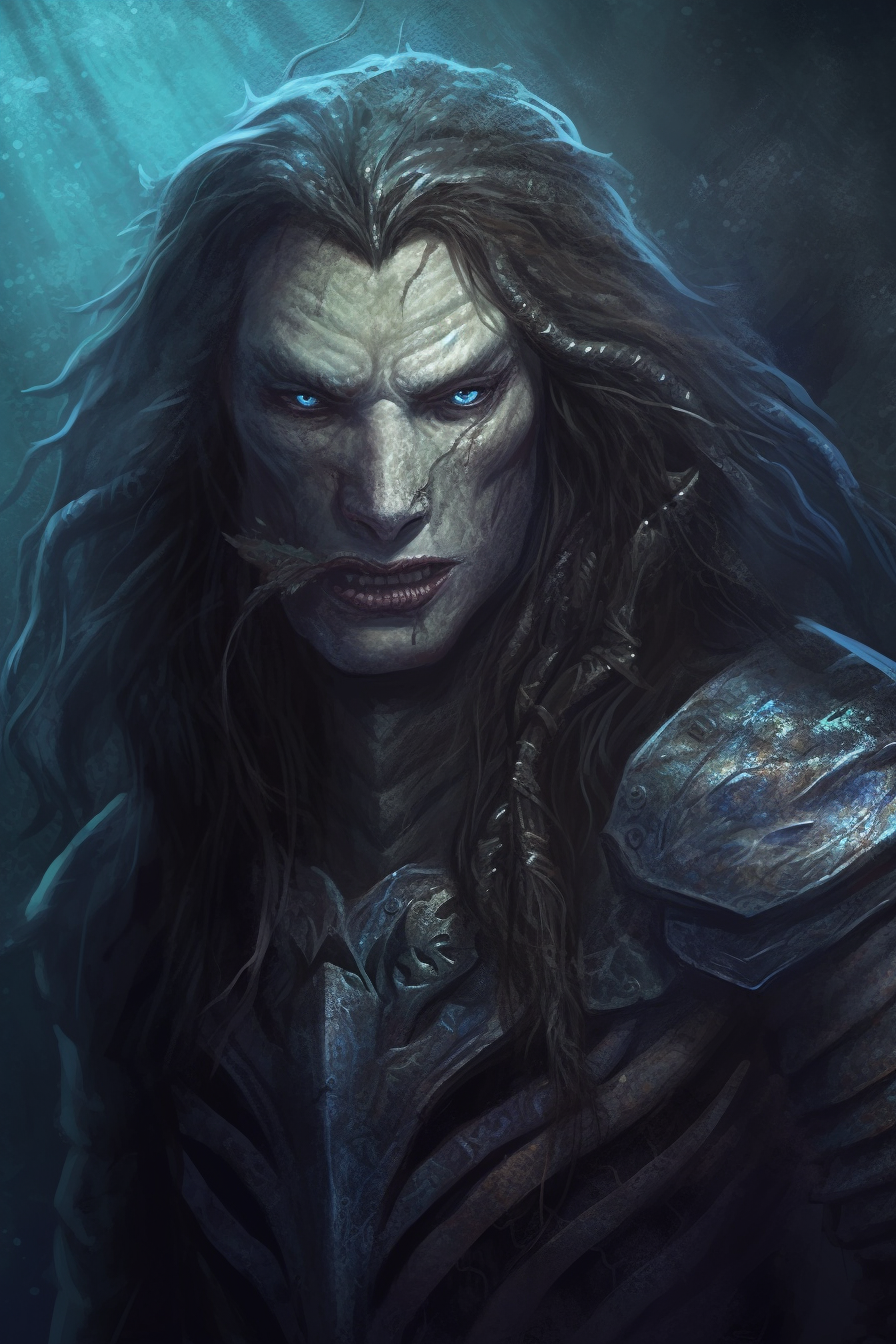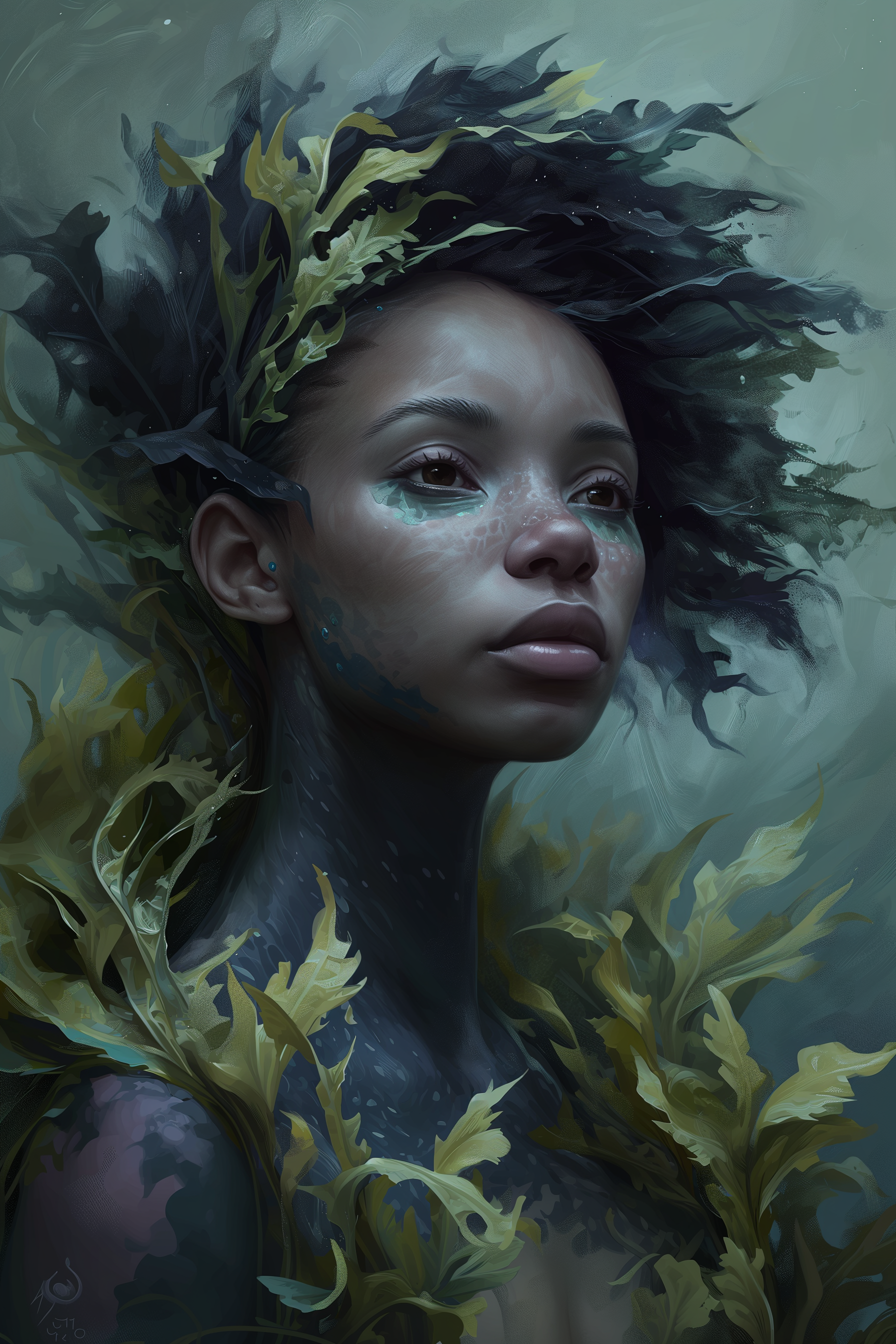Tritons
1st of Sun's Swell, AE 721
Tritons are a species of amphibious humanoids found in every ocean and sea on Aidonia. They are among the tallest species of humanoids, averaging shorter only than goliaths, minotaurs, and firbolgs, and are the only amphibious humanoid believed to be endemic to Aidonia.
Basic Information
Anatomy
Tritons are often divided into a number of geocultural regions which typically differ slightly in outward appearances, such as coloration or fin shape, but are still the same species and share most other anatomical and physiological traits.
Tritons generally trend towards tall, muscular builds with broad shoulders and long limbs. Their back and shoulder muscles are well defined, and their feet are somewhat proportionally large compared to other humanoids. Their hands and feet also exhibit partial webbing, extending to the proximal phalanges in the hands, and the medial phalanges in the feet.
Northern Polar
Even by triton standards, northern polar tritons are quite tall, standing between 7 and 7.5 feet when fully grown, with females often being slightly larger than males. Their skin ranges between shades of grey and brown, and typically has a somewhat rough appearance, having patches of placoid scales along their back, torso, and legs. They are notably one of the most long-lived types of triton, often living up to twice as long as other tritons.Central Kentron
Central Kentron tritons are most capable of passing as land-based humanoids. Their pale skin and hair ranging in color from black to white to all shades in between often allows them to pass as Hitomin dark elves from the neck up, although the dark scales which cover the posterior of their torso and legs, as well as the small fins on their forearms and calves may give them away. They are notorious for their sonorous, melodic voices, known to persuade sailors to leave their waters, even if it means running aground.Southern Polar
Much like their northern relatives, southern polar tritons have tall, stocky builds to keep them insulated from the frigid waters they live in. They are on average some of the largest of the tritons, with their thickset, black-and-white forms typically reaching 8 feet tall and weighing over 250lbs when fully grown. Their skin has a slightly rubbery texture to it, beneath which is a layer of blubber which insulates much of their torso and limbs. They typically have pronounced sagittal and dorsal fins.Star-facing Caelestis
Star-facing tritons are known for their seaweed-like hair, which when combined with their dark grey, blue, or purple-toned skin, helps them camouflage themselves before they strike with a venomous, pharyngeal-jawed bite. Their silhouettes tend to be more lean than that of other tritons.Dusk Caelestis
Dusk tritons are a bioelectric variety of triton. Their skin tends to be dark in color, making them look superficially similar to star-facing tritons, and allows them to better blend in with the dark waters they inhabit and disable their prey with powerful electric shocks.Sideralis Strait
Tritons of the Sideralis Strait and nearby southern Kentron Ocean region are some of the smallest and also most vibrantly colored tritons. Still averaging between 6.5 and 7 feet tall, these tritons are able to shift the coloration of their skin; the patterns they produce are not elaborate, but can greatly aid in camouflage. They a large sagittal fin with two additional, slightly smaller fins on either side of it, as well as fins on each ear and long, short dorsal fins down the length of their back.Salder-Mansraine
Salder-Mansraine tritons are believed to be mostly unchanged from earlier forms of tritons, which would later adaptively radiate into the dusk and star-facing Caelestis types. Salder-Mansraine tritons tend to have lighter complexions to better blend in to their sun-facing environs, but shares both of their abilities when it comes to shocking and envenoming their prey, although to a lesser degree of specialization.Genetics and Reproduction
While tritons are capable of reproducing with other humanoid species, half-tritons are quite rare, with those born to female tritons almost unheard of, with most being left in the care of land-based mothers. Some believe this is due to cultural factors, while others suggest that half-tritons would not be physically able to thrive in an oceanic environment; their lungs could not absorb water well enough, or their kidneys could not efficiently filter the large quantities of salt that tritons consume. However, much of this is conjecture and has not been confirmed through rigorous scientific study.
Ecology and Habitats
Triton populations tend to be quite sparse and are often at least semi-nomadic, but can be found in seas and oceans all over the globe. The few locations they are not known to inhabit, such as the Mylvenore Strait and the Gulf of Meyash, are those which are both shallow and in close proximity to land settlements, or, like the central Trennet Ocean, are quite deep and well over one thousand miles from the nearest coastline or civilization. Regions such as the Mansraine Sea have begun seeing dropping interactions with tritons in recent years as they become more active waterways.
Dietary Needs and Habits
Tritons require the same quantities of food and water as similarly sized humanoids. Their kidneys are unique in that they are capable of filtering out salt more efficiently than non-aquatic humanoids, allowing them to safely consume sea water without ill effect.
Civilization and Culture
Interspecies Relations and Assumptions
Tritons are by far one of the most exoticized peoples in the world, being so close but just out of reach for anyone without either sufficient magic or money to afford cutting edge diving technology. They are rarely seen on land, and reliable information on their lifestyles is scarce. The "kindest" of assumptions often paint them as noble savages, romanticizing them as man unsullied by modernization, perfectly in tune with the natural environment, while the explicitly unkind leave out the noble part, painting them instead as vicious and territorial apex predators, often using them to deflect the blame for boating accidents.
Lifespan
100 years (200 for northern polar tritons)
Average Height
6.5-8 feet (2-2.4 meters)
Average Weight
175-300lbs (80-136kg)
Geographic Distribution
Players: see the following possible racial traits for the various types of tritons: Sideralis Strait Triton, Star-facing Caelestis Triton, Dusk Caelestis Triton, Central Kentron Triton, Salder-Mansraine Triton. These traits are optional, feel free to use the original if you prefer it!










Comments